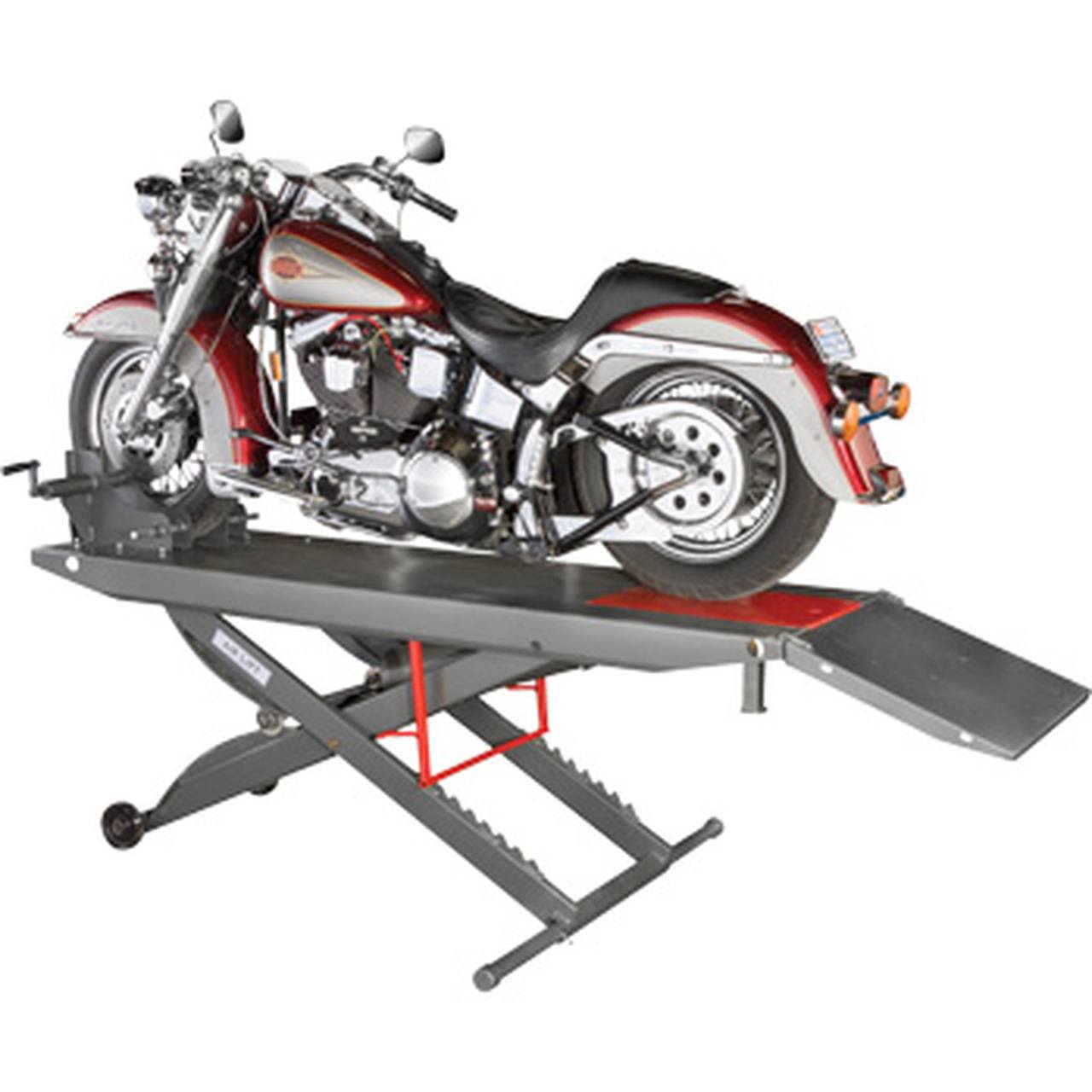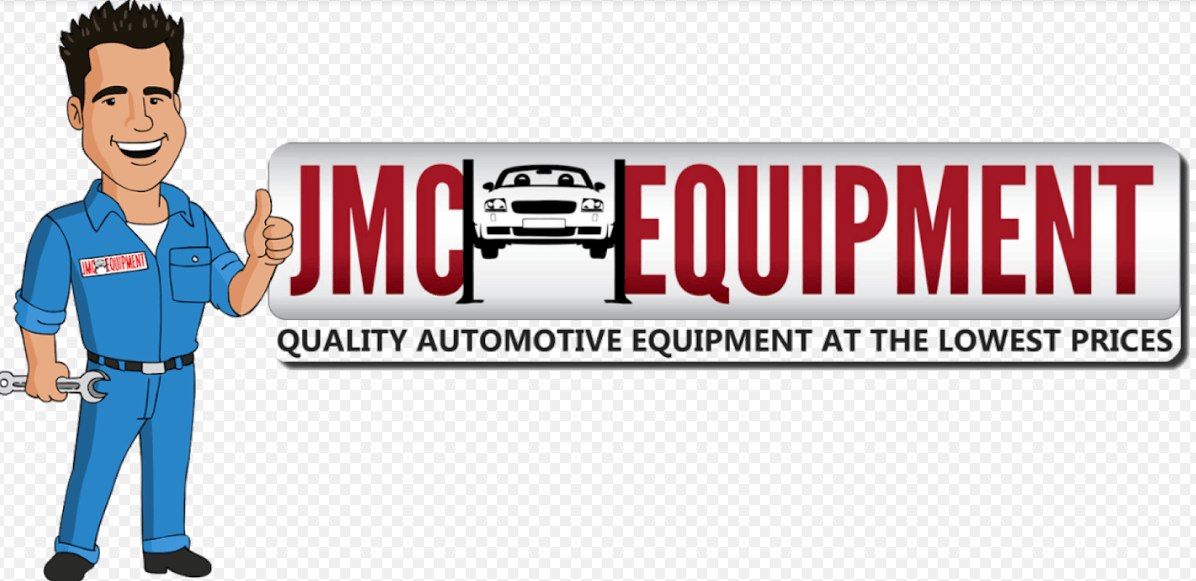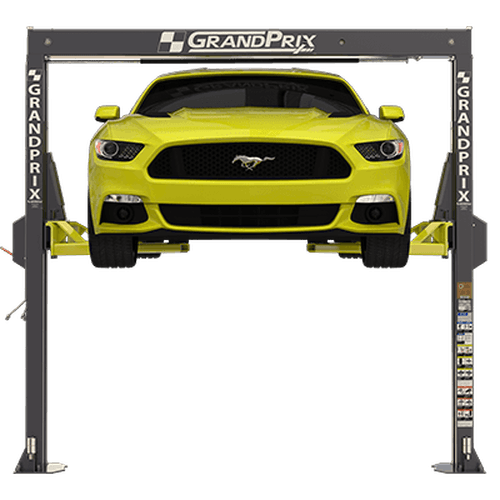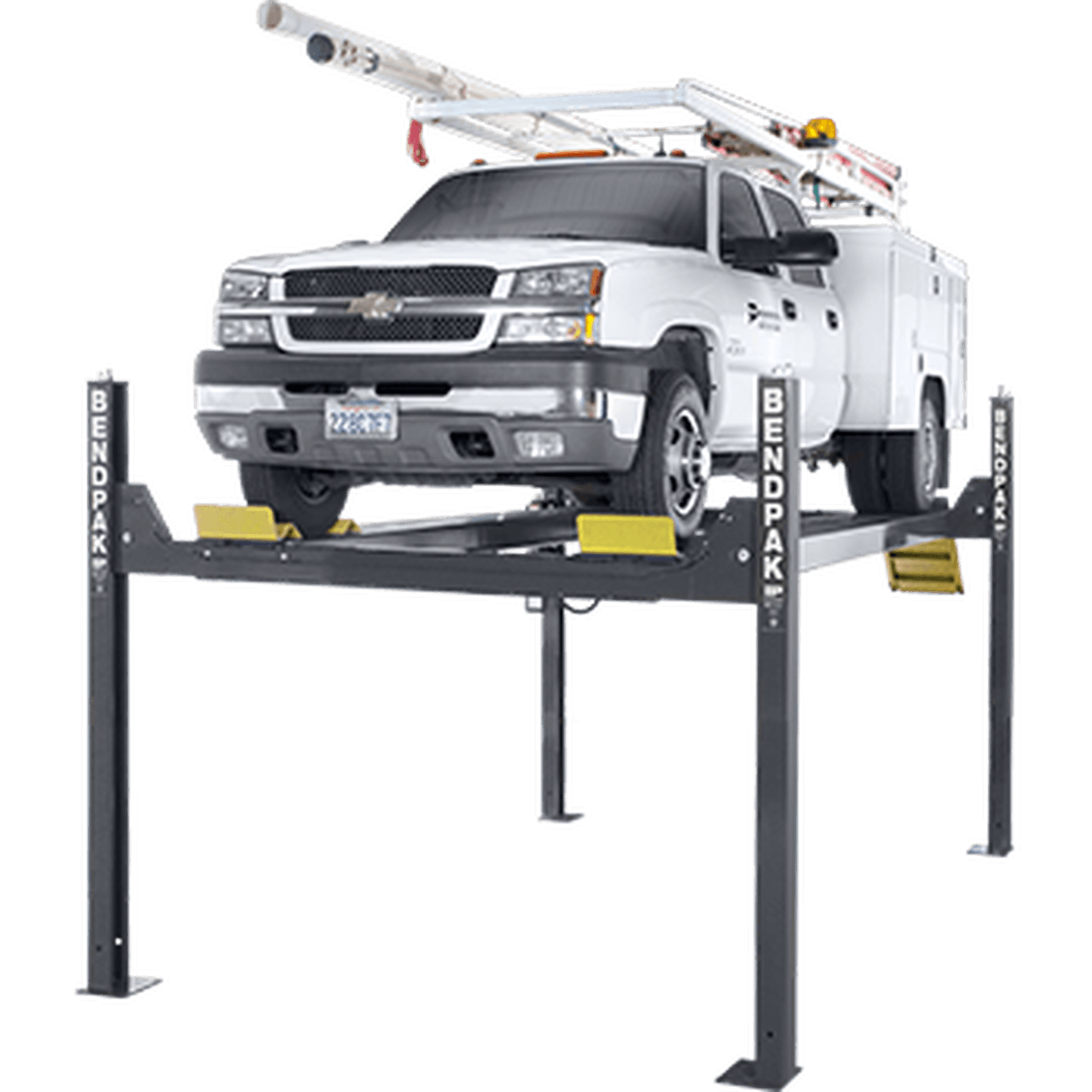Six Things to Consider When Choosing A Carlift | JMC Auto
Posted by Juan E. Chavez on 10th Jun 2019
Carlifts are hands down, one of the most important pieces of equipment you can buy for your shop. Unless you’ve been around the block a few times and know a lot about carlifts—having worked with a couple of different models in shops of different sizes and shapes helps—you’re going to have a tough decision on your hands. It can be pretty tricky to decide on exactly which one you’ll want to invest in, and it’s not like you can take it back to the store if you don’t like what you end up with. It’s an important decision, so it pays to be as prepared as possible. If you’re asking yourself, “What can I consider when buying a car lift?” then keep reading—the information below will give you a pretty solid grounding in the basics, and at least enable you to ask the right questions.
There are quite a few various different styles of lifts, each designed for a specific type of vehicle or job, each with its pros and cons. You really need to put a lot of thought into how to choose a carlift. If you end up choosing (or using!) the wrong lift, you can damage the vehicle, which you don’t want—or worse, injure yourself, which you really don’t want.
Here are six things you should consider when buying a carlift—and a general word of advice before we start: don’t be afraid to ask questions, and you may even want to consider finding an auto repair shop that uses a model of the type you end up considering.
#1: Do Your Research
When you’re looking to buy a lift, call vendors, go online, and do plenty of research. Doing your homework here will really pay off. Read every lift review you can find, settle on a high-quality brand—and make sure you’re using a vendor who only carries lifts that have been certified by the Automotive Lift Institute (you can find out more about them at autolift.org). They’ve been around since 1945, are credentialed by ANSI, and they provide high quality, independent, third-party Certification Programs that promote the safe design, construction, installation, inspection, and use of automotive lift products. Here at JMC Automotive Equipment, we only carry lifts from manufacturers that have been certified by the ALI—quality, trustworthy brands like Titan, Challenger, Tuxedo, and BendPak.
#2: The Right Lift for the Space
The right lift can make maximize your space, putting the vehicle where you need it to work on it and still giving you ample room to move around the shop to get at the tools and equipment you need to service or repair whatever you’re working on. Chances are, unless you’ve been working in a shop for a few years, have talked to someone with a lot of experience, or have done a ton of research, you’ll probably have a hard time deciding which lift is the right fit for the space you’re working in.
Measure twice, buy once. Take into account the accurate dimensions of your shop space—measure the length, width, and height of your garage, paying special attention to where you plan to install the lift. The most important factor here is probably going to be ceiling height, which is especially important if you’re going with a two-post, overhead beam lift. The key here is to really know the amount of room you have to work in—the more space you have, the more options will be available. If you’ve got the space, there are super wide and extra tall models—as well as narrow fit lifts for tight spaces, but you’ll be a little more limited in choice.
If you think you’ll have the need to park two cars in one space, consider a four-post lift. A four-post lift lets you store one car and still gives you enough room to work on another, but if you just need the storage space,
#3: The Right Lift for the Vehicle
Know what kind of vehicles you’ll need—or want—to be able to work on, and which you’ll absolutely need to lift in order to service. Bigger shops will generally require multiple lifts capable of handling different vehicles and serving different needs. Trucks and SUVs are going to need higher capacity, taller lifts, for instance. Tall vehicles can’t be lifted as high on standard height lifts, which will make certain jobs difficult (if not impossible). If you’re buying a lift specifically for additional parking space and will need to put an SUV or a truck on the lower level, your ceiling height is going to be a critical factor. If you just need to stack a couple of smaller sports cars, you won’t need to concern yourself as much with the overhead space you might have available. Think through the various scenarios you’re likely to run into and try to plan for something that gives you as much flexibility as possible.
#4: Cost
This one’s pretty self-explanatory, but you should definitely do a little thinking about how much of an investment you’ll want—or be able—to make. Having more versatility in the kind of vehicle you can service, the amount of space you can save in your shop, and how much your initial cash outlay is going to be will help you determine the answer to this question. But do realize that it is an investment—get the best lift you can afford, because it’s not the kind of thing you’re going to be buying every six months.
#5: Installation
Is this going to be the kind of job you can handle yourself, or will you need to hire someone to do it for you? Most mechanically inclined people—and if you’re working in a shop, I’d hope that includes you—should be able to install a car lift with not too much undue difficulty. Help—and experience—are always a good thing to be able to call on, and for all but the most simple lift installations, it would be a good idea to have at least one helper who’s capable of competently assisting you. If they’ve done it before? All the better. Ask your vendor to email or otherwise deliver a copy of the installation manual so you know what you’re up against, can determine if it’s something you can handle yourself, and can plan accordingly.
#6: What Type of Carlift Is Right for You?
This is where it gets a little more complicated. There are a lot of choices here, and a lot of factors to consider with each model.
Two-Post Lifts: You might want to opt for a model with a direct-drive design, which uses heavy-duty hydraulic cylinders to supply lift action, rather than a model that relies on chains and cables that will wear out frequently and drive up the operating cost of the lift. You might spend a little more on a heavy-duty hydraulic lift, but you’ll save time and money on repairs—and hydraulic lifts are safer, so you’ll be investing wisely. If, for whatever reason, you do decide to opt for a two-post lift, choose a model that has larger equalizer cable pulleys, superior arm restraints, and as sturdy a design as possible, to help ensure your equipment will stay safer and last longer between repairs. Downtime is not something you want to deal with in a busy auto shop.
Consider something like a model with triple telescoping front arms, which make it possible to work on wider vehicles because they enable you to reach the jacking points much more easily. Maybe a symmetrical model is right for your needs—they’re ideal for rear-end heavy vehicles, as they center the reach between two opposing posts. Asymmetrical models are going to set the vehicle farther back, which gives you the ability to open the door much wider when entering or exiting the vehicle, so consider that if you commonly need to gain access to the interior of a car while you’re working on it.
Four-Post Lifts: Commercial quality, heavy-duty, able to handle almost any common vehicle lifts like these are going to make any commercial auto shop more than content. Find out how much weight the lift you’re considering can handle—while it might seem like overkill, something like a 12,000-pound lift is going to be that much more versatile than something in the 8-9,000-pound category. Look for a system that has features like dual safeties, a slack cable safety system, and well designed, durable mechanical ladder safety systems, and be absolutely sure that they are ALI certified. The ladder safety system will come in handy if you’re working on an uneven floor, as it will give you the ability to level the lift in seconds. Plan ahead.
Scissor Lifts: Bear in mind that scissor lifts aren’t intended for long-term storage of a vehicle, and if you use them for that purpose, they’re going to wear out on you quickly—or possibly fail entirely, which you don’t want. One big advantage that scissor lifts provide is that they do give you ample space to work in, no matter what kind of vehicle or repair job you’re dealing with. There are available BendPack lifts which give you a maximum lift of more than 69", and which are ideal for most low-profile vehicles. There are several other options in the scissor lift category ranging from low-rise to full-rise models, so do your homework and be sure what you’re buying is something you’ll be able to get the most use out of.
Low-Rise Lifts: Low-rise, portable lifts are the perfect fit for a small auto repair shop, because their design allows you to set them up and break them down for storage very quickly and with a minimal amount of effort. These are going to be electric/hydraulic lifts and will be able to handle up to around 6,000 pounds, no sweat. The dropped cross bar design will give you valuable added clearance and ample space to work. There’s nothing more annoying than struggling to fit tools in the space between the vehicle and the lift—unless it’s repeatedly banging your hands on the lift while trying.
In-Ground or Pit Lifts: More hydraulic/electric lifts, fast operating, and again in about the 6,000-pound lifting capacity category, these lifts are low profile, with an open-center design. A shop that specializes in quick lube jobs is going to want to consider something like one of the pit lifts from BendPak, which are ideal for that purpose. Whatever lift you decide on, you’ll find this category of lift generally very economical and cost-effective, as well as easy to use. Drive the vehicle on, tackle the job, drive the vehicle off, and you’re set and ready for the next job in line. Great for busy shops that don’t need the capacity some of the larger lifts provide.
Single-Post Lifts: These are pretty old-school, but they’ve been around forever for a very good reason. The mounted, single-arm, platform lift is fantastic for just about anything you can throw at it—cars, trucks, RVs, boats—basically, if you can park it on the lift, you can raise it up and work on it. There are models available in both standard and extended rise, with removable center panels which make it easier to maximize your available space and let you get more done with less fuss. Look for a model with flip-up ramps that double as secure wheel chocks, which is a great safety feature. These really are a great option if your shop handles a lot of SUVs or work trucks, as the wide, low-profile deck and heavy-duty construction common to single-post lifts ensures safety even when you’re working with the widest vehicles on the road.
Motorcycle Lifts:There are several different styles available, and in a variety of electric/hydraulics, pneumatic, and manual power-drive models. Motorcycle lifts are incredibly portable, easy to store, and available in platform or open jack styles.
 The Ranger RML-600 is a durable motorcycle lift table with a 1,000-lb. lifting capacity, the pneumatic lift platform brings professional ease to any motorcycle or ATV service job. Need an extra boost? Check out the RML-1100 Motorcycle / ATV Jack. Or if you are looking for a more robust feature-set and the ability to lift an additional 650 lbs., consider the RML-1500XL.
The Ranger RML-600 is a durable motorcycle lift table with a 1,000-lb. lifting capacity, the pneumatic lift platform brings professional ease to any motorcycle or ATV service job. Need an extra boost? Check out the RML-1100 Motorcycle / ATV Jack. Or if you are looking for a more robust feature-set and the ability to lift an additional 650 lbs., consider the RML-1500XL.
If you build, re-build, repair, service, maintain or store motorcycles and you still don’t have a Ranger motorcycle lift, you're robbing yourself of a truly awesome do-it-yourself experience. Ranger motorcycle / ATV lifts are known as some of the finest in the industry for quality, features, safety and longevity.





